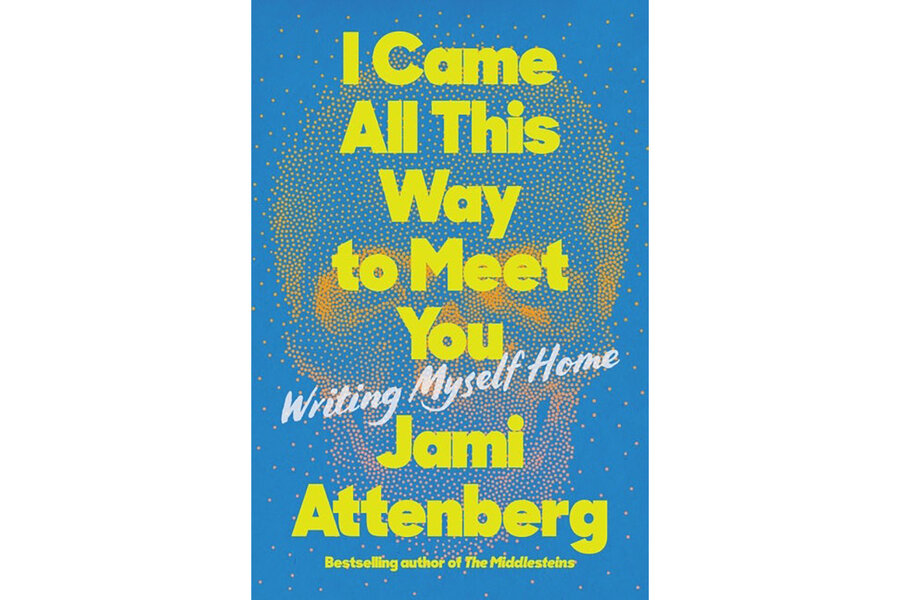Jami Attenberg models a long but tenacious journey toward writing
Loading...
Novelist Jami Attenberg’s midlife memoir isn’t exactly a victory lap, but it’s written from a place of hard-won contentment after years of struggle. Among other things, “I Came All This Way to Meet You,” an account of how Attenberg became a full-time writer, is a paean to persistence.
It is also the kind of book that will interest some people very much – especially aspiring writers. Others, to whom her work is less familiar, perhaps not so much.
Attenberg joins a growing contingent of established novelists who have shared their early literary travails. Most recently, these include Lily King in her partly autobiographical novel “Writers and Lovers” (2020), and Ann Patchett in some essays in “These Precious Days” (2021). Such tales can be reassuring to those starting out.
Attenberg is probably best known for her breakthrough fourth novel, “The Middlesteins” (2004), which centers on a woman addicted to food. Less known is the fact that, in a blow that might have proven fatal to many writers’ careers, “The Middlesteins” was rejected by the publisher of her first three books. Attenberg’s subsequent novels – including her most recent, “All This Could Be Yours” (2019), about the damage that a nasty narcissist inflicts on his family – have secured her place as a master of the sardonically twisted yet moving family saga.
Just as Attenberg’s readers have expressed surprise that she isn’t overweight like her character Edie Middlestein, they may be surprised to learn that she comes from a close, loving family in the Chicago area. Her father, an outgoing salesman, taught her that “If you can sell one thing, you can sell anything” – appliances, widgets, books. Her mother introduced her to “the joys of reading and creativity” and nourished the belief that “I could accomplish anything I wanted no matter my gender.” Before they retired to Florida, her parents ran a sewing store together called Prints Charming.
“I Came All This Way to Meet You” is generally warmer and more confessional than Attenberg’s novels but shares with her fiction a tendency to jump around in time. While in her novels these chronological leaps add layering and foreshadowing, here they lead to sometimes disorienting or bothersome repetitions.
Attenberg begins with great brio: “For 20 years, I hustled,” she writes, and sprays us with a shower of past tense verbs, describing what she did: “I ran the cash register at a pharmacy. I counted pills. I sold lottery tickets … I waitressed … I temped. I filed. I answered phones. I typed up letters.”
Although not as spirited as Helen Ellis’ “I casserole. I pinwheel. I toothpick” in “American Housewife,” (which was the breakthrough book that restarted Ellis’ stalled career), Attenberg effectively captures the battery of odd jobs that eventually led to writing-adjacent work – spellchecking, copyediting, copywriting, and later, employment for a cable network she doesn’t name, where men created all the shows. (A Google search points to HBO.) She comments, “I wasn’t totally wasting my life,” though she memorably calls the uninteresting writing she did for most of these jobs “a decoration on the page, the baby’s breath of corporate America.”
When she figured out that what she really wanted was to write her own stuff, “Everything got easier, in a way … even as things got much, much harder.” She began to write, she says, not with ease but with diligence, determination, focus, and “great delight.” She adds, “I leaned into my eccentricities” – even if it meant penury and couch-surfing. She notes that the year she was 40 (10 years ago), she slept in 26 locations in seven months.
“The writing filled me like nothing else had. But it also poked holes in me, and that was where the sadness came out,” she writes. Still, she came to relish what she calls “the safety of a sentence.”
Safe from what? Eventually, we learn about her wounds – including the lasting repercussions of an assault by a fellow writing student during her freshman year at college.
Attenberg understands that being a writer involves salesmanship, which takes her – and this narrative – on book tours, both domestic and abroad. She makes a friend who shares her fascination with ossuaries and “seemed to wear her insides on her outside, just like me.” She moves from New York to New Orleans, and delights in the contrasts – along with a guest room in which to host friends. While some of her travelogues feel like filler material, she’s come a long way, and is eager to share her route.






